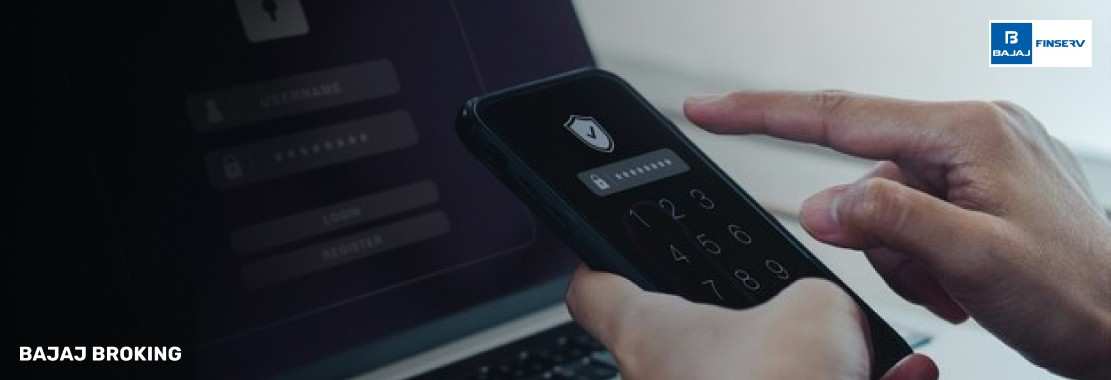The financial system all across the board has shifted to the digitalisation of its working mechanism to bring efficiency, transparency and security. In today’s age, transactions have become almost paperless, and it is important to stay updated with the changes for a smooth seamless adaptation. The stock market in India is now largely facilitated by broking platforms that allow you to create a trading and a demat account.
Opening a demat account is a prerequisite to take part in stock market trading as it serves as an online vault that holds your shares and other securities. When you open your demat account you are provided with a unique identification ID that is known as the BO ID.
BO ID stands for beneficiary owner identification ID that is registered with the CSDL and is unique for every demat account holder. Every transaction you make using your demat account is registered under your BO ID number therefore making this identification number extremely important. Know that this is a 16-digit alphanumeric code with its first 8 letters representing the DP ID with the CDSL and the last 8 representing your unique ID. Also remember that for the NSDL depository, the BO ID of your demat account number starts with “IN” followed by a 14-digit unique number.
In this article, we will deal with the details of the BO ID to help you easily navigate to your online demat account.
How to Find Your BO ID?
If you are unable to locate your BO ID, you can follow these simple steps to find your BO ID:
Visit the official website of your online brokinh platform.
Login into your demat account and navigate to your profile window. You’ll be able to locate“my profile“ or a similar option to open your profile window.
Once you open your profile window you can see “demat account” or “account information”.
Select the Demat account option, and you will find a 16-digit unique identification number on your profile, which is your BO ID.
For future purposes, make sure to make a note of your BO ID.
How to Find DP ID & Demat Account Number?
If you are wondering how to find DP ID and demat account number, here’s everything you need to know.
Your demat account number is a 16-digit alphanumeric number.
This number is assigned by the depository participant once you have opened your demat account.
If your depository participant is registered with CDSL then your demat account number is also known as BO ID.
Remember that if your depository participant is registered with CDSL then your demat account number will be a 16-digit alphanumeric number and if it is with NSDL then the 16-digit alphanumeric code will begin with “IN” followed by 14 digits.
Here’s how you can find your DP ID and demat account number:
Visit the official website of your online broking platform and log into your account using your credentials.
On your screen, you will be able to find “My Profile” or a similar option. Open your profile to find an option similar to demat account information.
You will be navigated to a new page that will feature all the information about your demat account including your demat account number which is a 16-digit unique identification number.
The first 8 letters of the demat account number is the DP ID for CDSL and for NSDL “IN” is the DP ID.
Difference Between DP ID & Demat Account Number
At first, DP ID and demat account number might be the same but it is important for you to understand the slight differences between these two.
In a nutshell, a Demat account number is 16 digits alphanumeric code assigned to your account while the DP ID is an 8-digit number that is assigned to the depository participant. The first eight digits of your demat account number represent the DP ID.
Let’s take a more detailed look at the differences between these two:
Demat account number
A Demat account number is a 16-digit alphanumeric code assigned to you that appears under every transaction you make using your Demat account.
Just like your bank account number, the demat account number serves as a financial identity for stock market transactions.
Once you have opened your demat account you will be automatically assigned a demat account number that will be required for making any transaction like buying or selling of securities in the stock market.
You can easily Navi find your demat account number on your online demat account profile.
DP ID (Depository Participant ID)
A DP ID is an eight-digit number that is assigned to your depository participant either by the NSDL or CDSL.
Remember that a depository participant works as an intermediary between you and the Central depository: NSDL and CDSL.
A depository participant must get registered with either of the Central depository to get a DP ID.
DP ID is important as it serves for tracking transaction history.
If your depository participant is registered with CDSL then you can locate your DP ID as it is the first eight digits of your demat account number.
In cases where the depository participant is registered with NSDL, the demat account number begins with “IN” which is the unique DP IP followed by 14 digits.
Conclusion
The BO ID or the demat account number is a unique code assigned to you when you open your demat account and serves as the basis for your trading transactions. These unique identification numbers have provided a robust framework to ensure secure and efficient transactions and streamlined the process of tracking trading history. Since the financial landscape has evolved to become digitalised, you must keep yourself updated for a seamless experience in the stock market. Whether you are a beginner or an experienced trader, understanding the significance of BO ID is crucial.
To begin your trading journey make sure to choose a reliable broking platform to open your trading Account and demat account.




